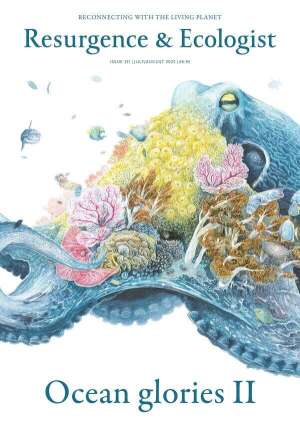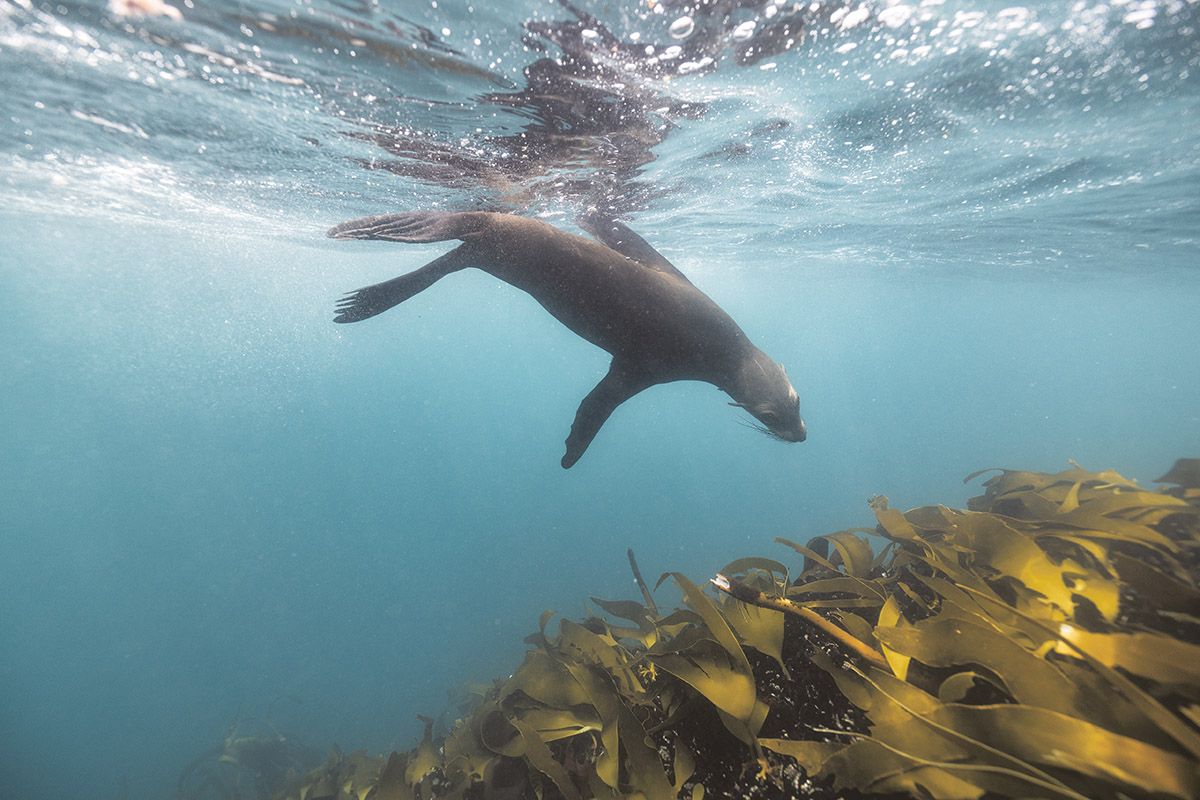When marine biologist Greg Hofmeyr approaches a sleeping southern elephant seal on the beach at St Francis Bay in South Africa’s Eastern Cape, precision and calm nerves are critical. “I have a syringe with the correct dose, attached to a long needle. I quickly plunge it into the muscle, inject the vaccine, and then jump away,” he says.
Such a scene would have been unimaginable just two years ago because, until 2024, rabies had never been documented in marine mammals. Now Hofmeyr’s cautious vaccinations reflect a disturbing new reality – not within the outbreak zone, but just beyond it. His work aims to prevent the virus from spreading into new regions and infecting other seal species that migrate between colonies.
The first known worldwide marine rabies epidemic has emerged among Cape fur seals (Arctocephalus pusillus pusillus), predominantly along South Africa’s Western Cape coastline. Genetic data confirms that the virus is now spreading from seal to seal without new introductions from terrestrial species. Over 60 seals have tested positive, sparking fear among coastal communities after aggressive infected seals attacked swimmers and surfers. Remarkably, no human cases have yet been confirmed, and no infections have been reported despite several documented seal attacks. Still, the unusual nature of the outbreak, combined with media coverage of the attacks, has stirred public concern and led to heightened beach warnings and safety measures.
Cape fur seals form some of the densest colonies among marine mammals, with up to two million animals inhabiting remote islands and rocky coastlines from Angola to South Africa. Their social nature – marked by territorial fights and playful biting – creates an ideal scenario for rabies transmission, primarily through saliva. Younger seals roam widely, potentially carrying the virus to distant colonies, exacerbating containment challenges. “Older individuals show site fidelity to particular colonies, while younger seals are highly mobile and move freely between colonies,” Hofmeyr explains.
“The most closely related virus that we’ve found in another species is from a jackal sample in Namibia,” adds Lesley van Helden, a state veterinarian with the Western Cape Department of Agriculture. That jackal-to-seal transmission likely marked the beginning of the outbreak. “Most of the rabies viruses in the seals are closely related to each other,” she explains, indicating that the virus is now circulating within the seal population.
Phylogenetic analysis and retrospective testing of archived brain samples show that rabies was present in Cape fur seals as early as 2021. This information confirms that the virus is no longer an occasional spillover, but has become endemic. Jackals and Cape fur seals have shared South Africa’s coastline for centuries – jackals are known to scavenge seal carcasses and occasionally attack weakened pups.
Since rabies is well established in jackals across the region, it’s surprising that the virus had not jumped to seals earlier. “Or did it happen before and we just didn’t notice?” asks Fabian Leendertz, director of the Helmholtz Institute for One Health. He points out that wildlife disease surveillance is often patchy. “If animals simply exist without attracting particular attention from science or authorities, a rabies infection can go undetected.” Kim Krynauw, who runs a seal rehabilitation centre in Hout Bay, says: “We’ve always seen aggressive behaviour in seals. It’s possible that rabies was there before, and we just didn’t know.”
Adding complexity, rabies behaves as a ‘slow burner’, with infected seals remaining symptom-free yet mobile for months, potentially spreading the virus widely before becoming visibly ill. “We know very little about how many animals are infected, how long the virus remains latent before symptoms appear, or how fast it spreads within a population,” Hofmeyr warns.
The challenge extends far beyond Cape fur seals. Marine mammals, unlike terrestrial animals, face fewer physical barriers and travel vast oceanic distances, raising alarm over potential spread into pristine ecosystems. Hofmeyr emphasises the vulnerability of Antarctic regions already strained by climate change. “We have no idea how devastating rabies might be there,” he cautions.
Brett Gardner, a veterinarian and rabies researcher with the One Health Research Group at Melbourne Veterinary School, suspects the virus is here to stay: “It seems quite likely that this virus is going to become endemic in Cape fur seals rather than reaching an evolutionary dead end.”
Researchers warn that the virus may already be adapting to its new host. “Looking at some of the genomic work, it appears that [the rabies virus in seals] might be forming its own distinct subgroup within the rabies virus, potentially its own biotype,” Gardner adds. Such an evolutionary shift would mark a turning point in the history of rabies research.
Currently there’s no practical way to mass-vaccinate wild seals. Traditional oral vaccine baiting, effective for terrestrial wildlife, fails with seals because they primarily consume live prey. “If you scattered dead fish containing a vaccine around a seal colony, 90% of it would just sink to the bottom and be eaten by other fish. Almost no seals would consume it,” Hofmeyr notes.
Instead, veterinarians like Ilse Jenkinson from the Two Oceans Aquarium in Cape Town target habituated seals in urban harbours. “By vaccinating the identified habituated seals in these specific areas, the potential risk of them contracting the disease will be greatly reduced. This will, in turn, reduce the risk of rabies transfer to members of the public making use of these areas,” she explains. These seals are also tagged for future monitoring and booster shots.
Cape Town authorities have swiftly embraced the One Health approach, emphasising interconnected human, animal and ecosystem health. Beaches now carry warnings, dog vaccinations have intensified, and a comprehensive rabies response management plan enables rapid intervention. “We currently run this plan for the entire Cape Town coastline,” says Gregg Oelofse, the city’s lead on coastal management. “If we receive a report of a seal that appears to meet the case definition – which includes exhibiting aggressive behaviour – then my team will respond. We go out, remove the animal, have it tested, and record whether the result is positive or negative.” He recalls the initial turning point: a rabid dog in Cape Town, traced back to a seal bite. Shortly afterwards, four unusually aggressive seals attacked surfers; tests later confirmed that three of the seals were infected with rabies.
Globally, however, no specific protocols exist for rabies outbreaks amongst marine mammals. Leendertz insists that this lack must be addressed, and urgently: “I definitely think we need them, because we now see it’s happening, and we absolutely must respond. We don’t want new pathogens establishing themselves in additional species.”
Ultimately the current strategy combines vigilant monitoring, targeted vaccination, and public education. For Hofmeyr, protecting other visiting marine species, such as the elephant seals regularly coming to South Africa from Antarctic regions, is paramount. “These other seal species that visit here could carry the virus into the Southern Ocean and introduce it to entirely new populations,” he warns.
If rabies continues to spread unnoticed among mobile ocean species, it could reach regions that have never before faced this threat. Antarctica’s remote and vulnerable ecosystems, with little immunity and no preparedness, may soon find themselves on the frontline of a crisis no one saw coming. Scientists warn that, without urgent action, this could be just the first in a series of spillovers driven by climate change, habitat shifts and the increasing contact between humans and wildlife.








